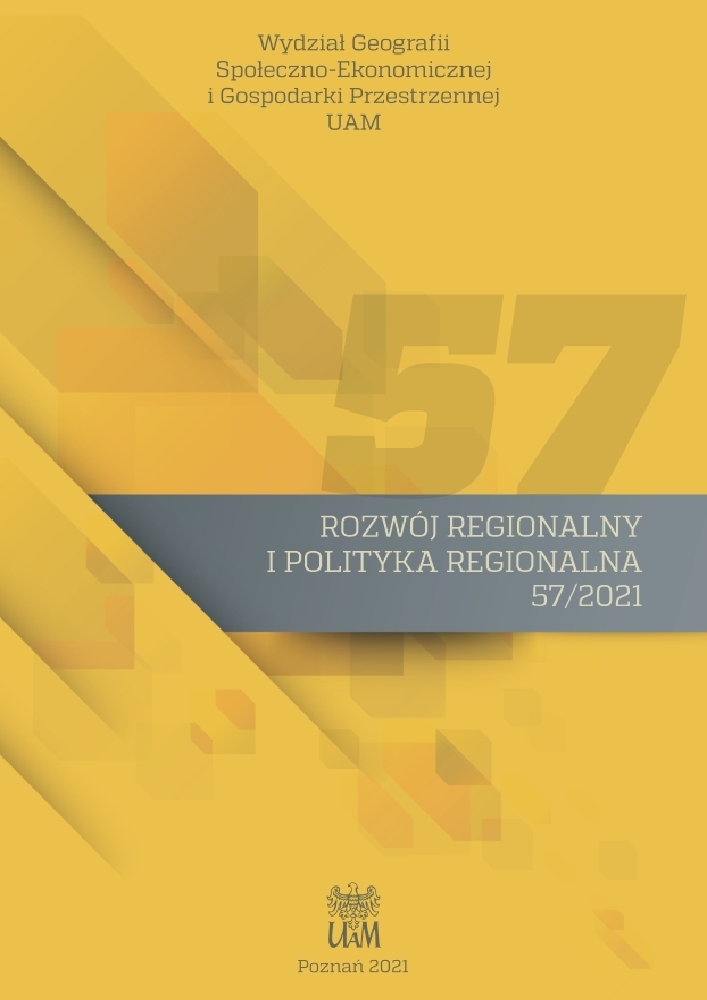Abstract
For Poland, 1989 marked the beginning of a process of political changes aimed at the transition from a totalitarian state to democracy and, consequently, from a centrally planned economy to free market. The first noticeable effect of those changes was the stocking of shops with food products from all over the world. At that time, consumers were reluctant to buy products from local companies, associating them with food of inferior quality. That was followed, just like in other European Union countries, by weariness with cheap, mass produced food. As a result, regions, as well as individual cities, began to look for characteristic dishes/products which could become the “food brand” of a specific place.
The aim of the study is to indicate the role of local government in the creation of a food product recognisable for a city/region. The example used here is the municipality of Trzcianka in the Greater Poland Voivodship. The entire field research was carried out in 2021, using the diagnostic survey method. Within the framework of the research, interviews with the employees of the Trzcianka town hall and owners of local bakeries, as well as questionnaire surveys with the inhabitants of the Trzcianka municipality were carried out. The research analysis has demonstrated that, in the local entrepreneurs’ opinion, the municipal authorities’ support influences the recognisability of their products to a very large extent. As the inhabitants have reported, they gladly buy bread from Trzcianka, although they do not identify it as a local product. The research has shown that the bread from Trzcianka bakeries has not become the town’s “food brand”, in spite of having won numerous awards at national baking contests. This is due to the lack of a promotional campaign focused on a selected food product.
References
Brunori G., Local food and alternative food networks: a communication perspective. Antropology of Food. From Local Food to Localised Food; https://journals.openedition.org/aof/430 (dostęp: 10.09.2021).
Gałek O. 2012. Produkt lokalny – dziedzictwo regionu. [W:] J. Majewski (red.), Wiejski produkt turystyczny – doświadczenia i wyzwania. Kieleckie Towarzystwo Edukacji Ekonomicznej, Kielce, s. 241-253.
Gębarowski M. 2010. Tradycyjne produkty żywnościowe w działaniach promocyjnych polskich miast.
Zeszyty Naukowe Politechniki Rzeszowskiej, 272: 115-120.
Goryńska-Goldmann E., Geneza i pojęcie żywności lokalnej w powiązaniu z ideą zrównoważonej konsumpcji. Turystyka i Rozwój Regionalny, 11: 23-35.
Hartman Group: Consumer understanding of buying local, Hartbeat. 2008. 27; https://www.hartman-group.com/hartbeat (dostęp: 8.09.2021).
Konecka-Szydłowska B. 2017. Zróżnicowanie polskiej sieci miast Cittaslow w aspekcie społeczno-gospodarczym. [W:] E. Strzelecka (red.), Alternatywne modele rozwoju miast. Sieć miast Cittaslow. Politechnika Łódzka Monografie, Łódź, s. 61-73.
Matysik-Pejas R., Cieślik J., Borecka A., Sowula-Skrzyńska E. 2017. Lokalne systemy żywnościowe i ich znaczenie dla obszarów wiejskich. Roczniki Naukowe Ekonomistów Rolnictwa i Agrobiznesu, 19(5): 143-148.
Mrozik E. 2011. Trzcianka miasto chleba i aluminium. Przegląd Wielkopolski, 25(4): 25-27.
Rozporządzenie Ministra Rolnictwa i Rozwoju Wsi z dnia 21 marca 2016 r. w sprawie szczegółowych warunków uznania działalności marginalnej, lokalnej i ograniczonej (Dz.U. z 2016 r., poz. 451).
Seyfang G. 2003. From Frankenstein foods to Veggie box schemes: Sustainable consumption in cultural perspective. The Centre for Social and Economic Research on the Global Environment EDM, 3-13: 1-28.
Sitek S. 2016. Uwarunkowania rozwoju lokalnego na obszarach przygranicznych. Wydawnictwo Uniwersytetu Śląskiego, Katowice.
Warczak M. 2015. Endogeniczne i egzogeniczne czynniki rozwoju gospodarczego z perspektywy finansów gminy. Współczesna Gospodarka, 6(4): 111-122.
Woźniczko M., Orłowski D. 2010. Etnografia i jej znaczenie w kształtowaniu współczesnej turystyki kulinarnej w Polsce. [W:] D. Orłowski, E. Puchnarewicz (red.), Turystyka kulturowa a regiony turystyczne w Polsce. Wyższa Szkoła Turystyki i Języków Obcych w Warszawie, Warszawa, s. 164-180.
Zadęcka E. 2017. Rola marki sieci Cittaslow w budowaniu wizerunku małego miasta. Modern Management Review, 24(4): 159-172.
Zalesko E. 2017. Produkty regionalne i tradycyjne jako instrumenty wspierania rozwoju gospodarczego regionu (na przykładzie województwa podlaskiego). Prace Naukowe Uniwersytetu Ekonomicznego we Wrocławiu, 487: 341-352.
https://trzcianka.pl/dla-turysty (dostęp: 23.08.2021).
http://www.konkurs-hit.pl/index.php?option (dostęp: 10.09.2021).
https://www.orlypiekarnictwa.pl/ (dostęp: 10.09.2021).
https://cittaslowpolska.pl/index.php/pl/miasta-cittaslow (dostęp: 4.11.2021).
License
Copyright (c) 2021 Izabela Chudzyńska

This work is licensed under a Creative Commons Attribution 4.0 International License.

